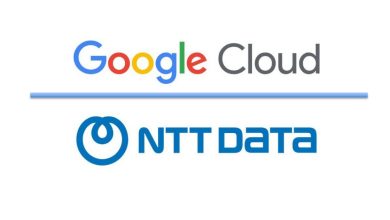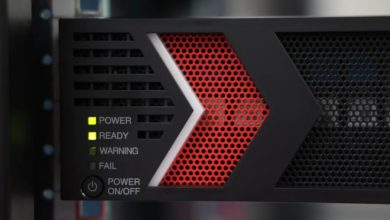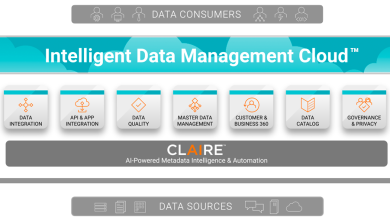
If you type “hybrid cloud” into your favourite search engine right now, you’ll discover that there are around 386,000,000 results that explain what it is or how to use it. If you’re interested in installing one due to the increasing pressures of market digitisation and want to understand how to leverage the potential and capacity of hybrid cloud to the benefit of your organisation, then you’ve come to the right place.
A cloud-based approach provides businesses with access to new methods of doing business, allowing them to keep up with the rapid progress of technology and remain competitive. How do you ensure that you are using the most cutting-edge, security-oriented solutions available while keeping up with your company’s demands?

How Does the Hybrid Cloud Meet Your Modern IT Needs?
- Flexibility
One of the most significant benefits of having a hybrid cloud architecture is the freedom of choice. Business owners can operate their apps and IT operations in a data centre, the cloud, or a hybrid of the two. Furthermore, you may increase your IT alternatives without adding complexity.
- Portability
It is now feasible to achieve portability across physical, virtual, private, and public clouds by deploying a universal business platform and application programming interfaces (APIs) for certified apps and containers. Business operations are no longer geographically bound and can now be accessed and managed from anywhere inside the confined or open network environment.
- Manageability
An administrative experience that is consistent and dependable allows administrators to focus on innovation rather than error-prone and repeated tasks. The hybrid cloud fundamentally allows you to automate formerly manual tasks, standardise deployment at scale, and simplify day-to-day management.
How Will Red Hat Enterprise Linux Solutions Help Your Hybrid Cloud Configuration?
Red Hat is a global enterprise open-source pioneer in cloud IT solutions. Red Hat Enterprise Linux (RHEL) is an open-source enterprise-class operating system based on the proven architecture of the open-source Fedora Project. Red Hat Corporate Linux prioritises stability and enterprise suitability above cutting-edge features and frequent updates.
Innovation – Red Hat’s primary concept is innovation. Adopting RHEL as an intermediary in your hybrid cloud architecture allows you to construct where and how you need to and deploy on RHEL more easily, even at edge locations. Because RHEL is an open-source operating system, this is feasible. RHEL is based on a collection of agreed-upon technologies that are well-supported, well-maintained, secure, performant, and suitable for production deployment. This simplifies the build-to-deploy process, making it easier to utilise.
Transformation – Convert business procedures and workloads to be interoperable with both the cloud and the edge. Using the image builder and RHEL container tools, the workload transformation process can be substantially streamlined and accelerated, making the process of digitally changing your firm much more approachable for novices. Because RHEL can be deployed on several platforms, including the cloud, administration and business and IT processes will become more streamlined.
Protection – Protect your company’s IT infrastructure by streamlining the operations that decrease risk, automate security, and ensure compliance. RHEL provides services that help to reduce risk by finding vulnerabilities and making security settings easier to implement. The orchestration of Security Content Automation Protocol (SCAP) profiles, system roles, and Red Hat Insights enables these services, which are named vulnerability reports and compliance services.
Microsoft Azure RHEL
Red Hat and Microsoft announced their collaboration in November 2015, with the goal of making Red Hat’s open technologies, including RHEL, available on Microsoft Azure. As a result of their partnership, the two titans now share principles, technology, and objectives to enhance hybrid cloud solutions.

RHEL clients today may benefit from the security and reliability characteristics that they have come to expect from Red Hat’s flagship. RHEL provides a solid platform for complex workloads both on-premises and in public clouds such as Microsoft Azure. Red Hat and Microsoft have worked together on Azure to provide the capabilities needed to deliver workloads faster and with less effort, backed by tightly integrated, enterprise-grade support. Many of today’s workloads need the usage of an enterprise database, and one of the most popular is Microsoft SQL Server.
For many complicated applications, RHEL-hosted corporate databases require presentation logic to be given via an application framework. One of these frameworks, Red Hat JBoss Enterprise Application Platform (JBoss EAP), is celebrating its 16th anniversary this year.
SQL Server support for Linux was added to the JBoss EAP a few years ago. SQL Server and JBoss EAP are both available as ready-to-run images in the Microsoft Azure Marketplace, which you may not have realised. Secondly, by combining these two solutions, you may design and deploy complicated business applications while only paying for compute time as needed.
Empower Your Hybrid Cloud Journey
Discover how Red Hat Enterprise Linux provides a modern IT environment on Microsoft Azure by providing an intelligent, dependable, and security-focused operating base.
Start using Red Hat Enterprise Linux 8 right away from the Azure Marketplace.





